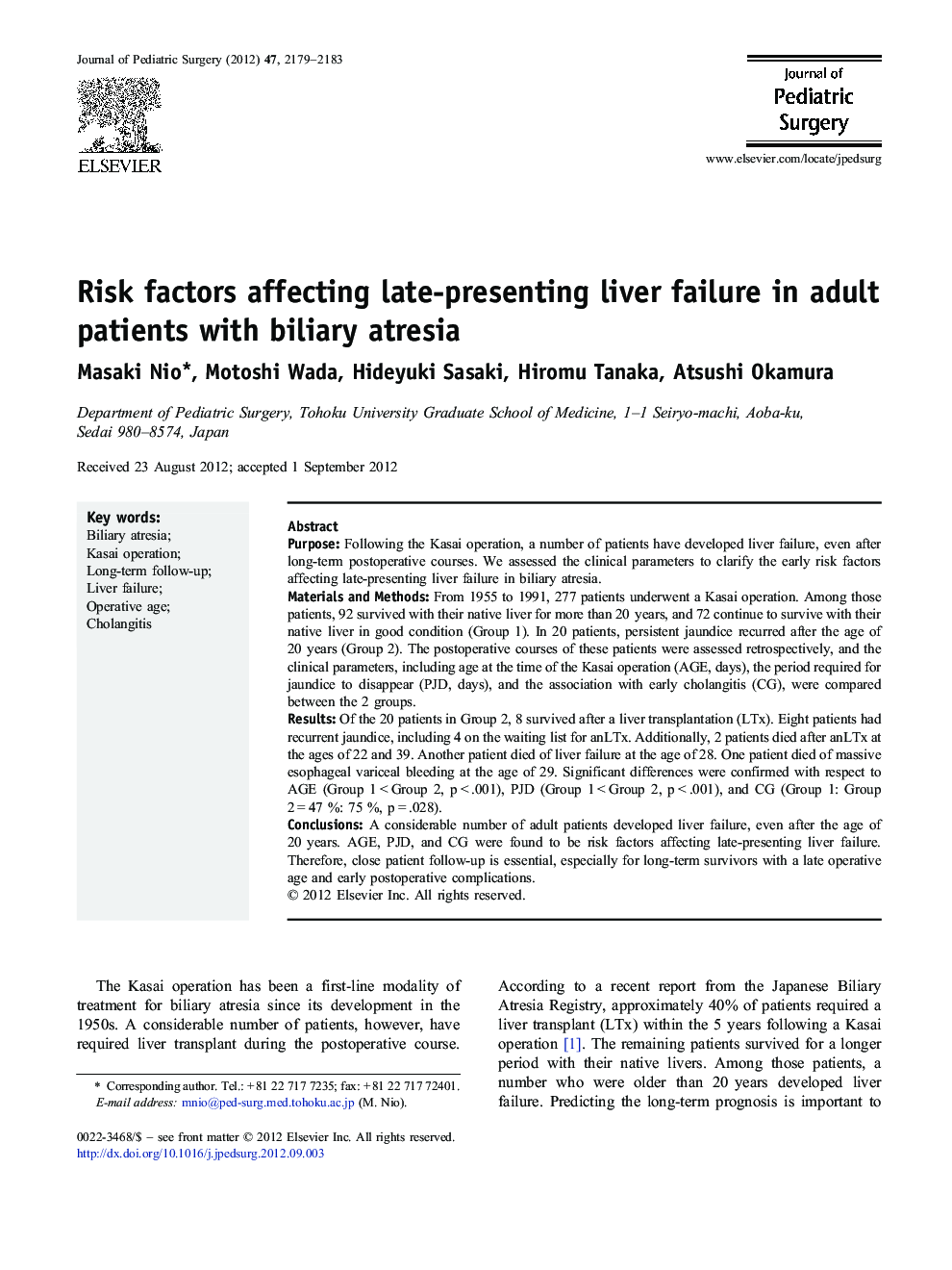| Article ID | Journal | Published Year | Pages | File Type |
|---|---|---|---|---|
| 4156465 | Journal of Pediatric Surgery | 2012 | 5 Pages |
PurposeFollowing the Kasai operation, a number of patients have developed liver failure, even after long-term postoperative courses. We assessed the clinical parameters to clarify the early risk factors affecting late-presenting liver failure in biliary atresia.Materials and MethodsFrom 1955 to 1991, 277 patients underwent a Kasai operation. Among those patients, 92 survived with their native liver for more than 20 years, and 72 continue to survive with their native liver in good condition (Group 1). In 20 patients, persistent jaundice recurred after the age of 20 years (Group 2). The postoperative courses of these patients were assessed retrospectively, and the clinical parameters, including age at the time of the Kasai operation (AGE, days), the period required for jaundice to disappear (PJD, days), and the association with early cholangitis (CG), were compared between the 2 groups.ResultsOf the 20 patients in Group 2, 8 survived after a liver transplantation (LTx). Eight patients had recurrent jaundice, including 4 on the waiting list for anLTx. Additionally, 2 patients died after anLTx at the ages of 22 and 39. Another patient died of liver failure at the age of 28. One patient died of massive esophageal variceal bleeding at the age of 29. Significant differences were confirmed with respect to AGE (Group 1 < Group 2, p < .001), PJD (Group 1 < Group 2, p < .001), and CG (Group 1: Group 2 = 47 %: 75 %, p = .028).ConclusionsA considerable number of adult patients developed liver failure, even after the age of 20 years. AGE, PJD, and CG were found to be risk factors affecting late-presenting liver failure. Therefore, close patient follow-up is essential, especially for long-term survivors with a late operative age and early postoperative complications.
